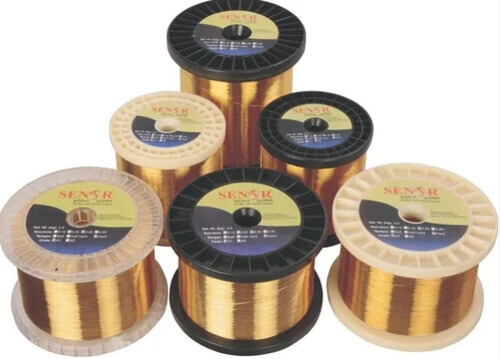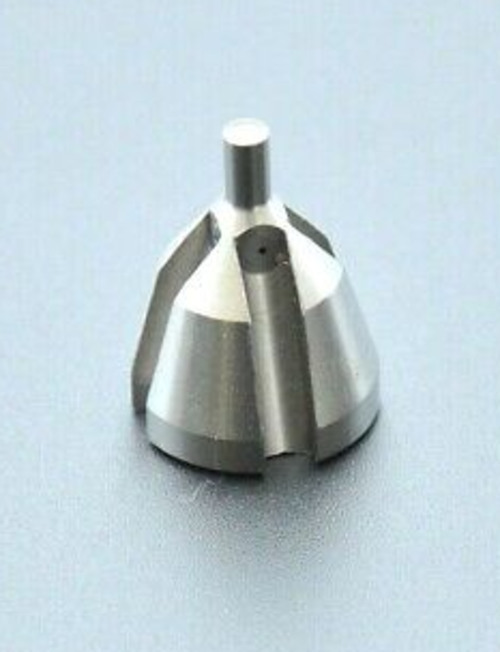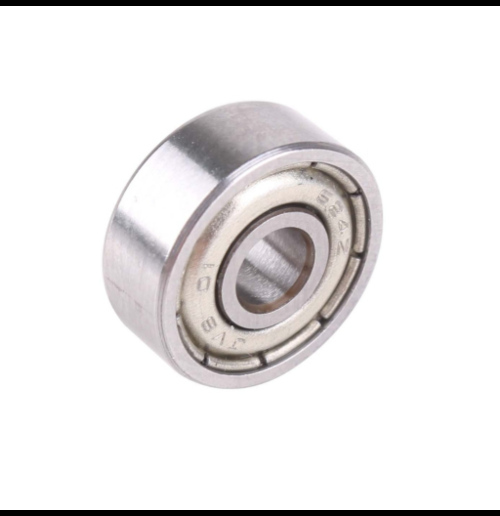Price 4000 आईएनआर/ Kilograms
Specification
- एप्लीकेशन
- EDM Wire Cutting Machines, Mould & Die Manufacturing
- स्पिंडल स्पीड
- N/A (not applicable to wire)
- कटिंग स्पीड
- Fast Cutting Speed
- शोर का स्तर
- Low
- टूल टाइप
- Wire Cutting
- पावर सोर्स
- Electric
- प्रॉडक्ट टाइप
- edm brass wire
- मटेरियल
- brass
- कम्प्यूटरीकृत
- स्वचालित ग्रेड
- कंट्रोल सिस्टम
- ड्राइव टाइप
- वोल्टेज
- 220V
- वजन (किग्रा)
- 5 kg (spool weight, approx.)
- आयाम (एल* डब्ल्यू* एच)
- Standard Spool Size (e.g., 200mm x 60mm x 60mm)
- क्षमता
- High Tensile Strength
- फ़ीचर
- रंग
Trade Information
- Minimum Order Quantity
- 5 Kilograms
- आपूर्ति की क्षमता
- प्रति दिन
- डिलीवरी का समय
- दिन
- नमूना नीति
- मुख्य घरेलू बाज़ार
About
EDM Brass Wire is a type of wire used specifically in Wire Electrical Discharge Machining (Wire EDM), a process used to cut complex shapes and features in metals and alloys. Heres a detailed explanation of EDM Brass Wire:
What is EDM Brass Wire?
EDM Brass Wire is a thin, solid wire made of brass alloy (typically a mixture of copper and zinc) that is used as an electrode in Wire EDM processes. It is one of the most common types of wire used in EDM machines because of its excellent electrical conductivity, durability, and precision. The wire is usually wound on a spool and fed through the EDM machine to create precise cuts in conductive materials, such as metal.
Key Characteristics of EDM Brass Wire:
-
Composition:
- Copper and Zinc: Brass is an alloy primarily made of copper and zinc. The exact ratio of copper to zinc varies, but it generally contains around 60-70% copper and 30-40% zinc. Brass wire typically contains a small amount of additional elements, such as tin or phosphorus, to enhance its properties for EDM applications.
-
Electrical Conductivity: The wire needs to conduct electricity well, as the EDM process relies on electrical discharges to remove material from the workpiece. Brass is a good conductor, making it an ideal choice for wire EDM applications.
-
Good Machinability: Brass is relatively soft and easy to machine, which makes it a good candidate for use as a wire in EDM. It can create fine, precise cuts without excessive wear or damage to the machine.
-
Low Wear: Compared to other materials, brass wire generally has low wear rates, allowing it to last longer during the cutting process. This is important for reducing downtime and maintaining cutting efficiency.
-
Smooth Surface: The smooth surface of EDM brass wire helps to reduce friction and ensures that the wire can move through the EDM machine without snagging or damaging the workpiece.
Advantages of Using EDM Brass Wire:
-
High Precision: Brass wire allows for precise, intricate cuts with minimal distortion. This makes it ideal for industries like aerospace, automotive, mold making, and medical device manufacturing.
-
Cost-Effectiveness: Brass wire is generally more affordable compared to other types of EDM wires, such as copper or silver-coated wire, making it an attractive option for many users.
-
Wide Applicability: Brass wire is suitable for a wide range of materials, including steel, stainless steel, and alloys, and is commonly used in high-precision cutting for parts like gears, dies, molds, and fine mechanical components.
-
Efficient Cutting: The conductivity and low wear of brass wire allow for efficient material removal, even for tougher metals, with higher cutting speeds.
Applications of EDM Brass Wire:
- Tool and Die Manufacturing: EDM brass wire is often used to create molds, dies, and other tools with intricate shapes that would be difficult to machine using traditional methods.
- Precision Engineering: The wire is employed to cut detailed parts and components that require high levels of accuracy and smooth finishes.
- Aerospace and Automotive: For complex components that require precision cutting, EDM brass wire is used to manufacture engine parts, gearboxes, and other critical components.
- Medical Devices: Cutting small, complex components for medical devices also benefits from the precision of EDM brass wire.
Conclusion:
EDM Brass Wire is an essential consumable in the Wire EDM process due to its electrical conductivity, precision cutting capabilities, durability, and cost-effectiveness. Its a versatile choice for a wide range of industries requiring high-precision machining
Exceptional EDM Performance
This brass wire features a high tensile strength and consistent elongation, making it ideal for fast and precise EDM wire cutting. Its oxidation-free and smooth surface ensures flawless operation, extending the lifespan of both the wire and the equipment. Used with automatic, CNC-controlled EDM machines, it streamlines the manufacturing of moulds, dies, and intricate precision parts.
Engineered for Reliability and Flexibility
With customizable diameters (0.10 mm to 0.30 mm) and excellent electrical conductivity, this wire meets diverse cutting needs across various sectors, including automotive, tooling, and precision engineering. It is compatible with most EDM wire cutting machines and supports consistent, high-speed operation with minimal noise and low maintenance requirements.
FAQs of Edm brass wire:
Q: How does this EDM brass wire benefit the EDM cutting process?
A: The brass wire offers exceptional smoothness and oxidation resistance, resulting in precise and fast cuts with minimal wire breakage. Its high tensile strength also reduces downtime and improves productivity, especially for demanding applications like mould making and automotive components.Q: What wire diameters are available, and can they be customized for specific projects?
A: Wire diameters range from 0.10 mm to 0.30 mm, allowing customization to meet the unique requirements of each job. This flexibility ensures optimal performance in various EDM applications, from intricate precision parts to larger components.Q: When should this wire be used in manufacturing?
A: This EDM brass wire is ideal for use during precision cutting and finishing processes, particularly in the production of moulds, dies, and complex automotive parts where accuracy and surface quality are crucial.Q: Where can this brass wire be sourced in India?
A: The wire is available across India through dealers, distributors, exporters, fabricators, importers, manufacturers, producers, retailers, service providers, suppliers, traders, and wholesalers specializing in EDM equipment and materials.Q: What is the process for using this wire in EDM wire cutting machines?
A: Simply load the wire onto the EDM machines spool holder, ensuring proper threading and tension. The CNC-controlled system manages the cutting process automatically, leveraging the wires good conductivity and strength for precise material removal.Q: What are the advantages of its surface finish and conductivity?
A: The smooth, oxidation-free surface minimizes wear and the excellent electrical conductivity enables efficient and stable spark discharge, which contributes to fast, high-quality cutting without defects.

Price: Â
- 50
- 100
- 200
- 250
- 500
- 1000+

 जांच भेजें
जांच भेजें






 जांच भेजें
जांच भेजें एसएमएस भेजें
एसएमएस भेजें मुझे निःशुल्क कॉल करें
मुझे निःशुल्क कॉल करें English
English Spanish
Spanish French
French German
German Italian
Italian Chinese (Simplified)
Chinese (Simplified) Japanese
Japanese Korean
Korean Arabic
Arabic Portuguese
Portuguese